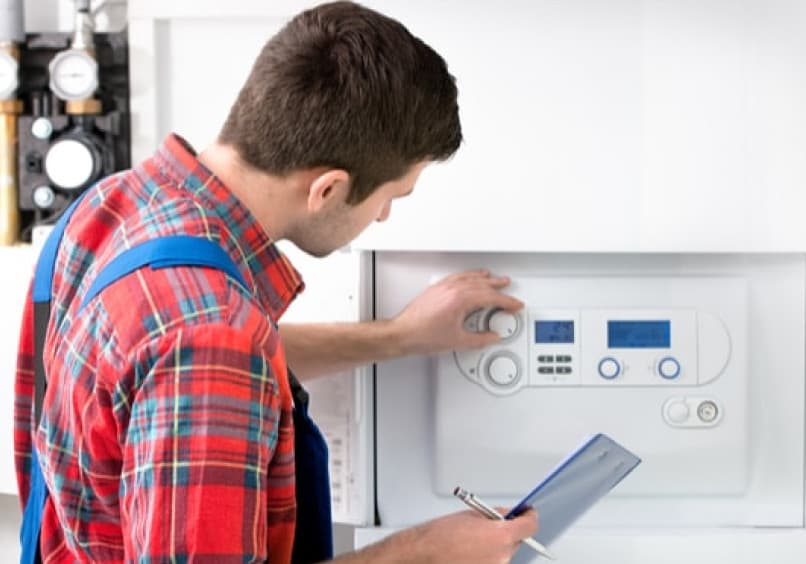5 Self-Help Ways To Fix Your Boiler Heating Before Calling An Engineer

It’s not always necessary to call out an engineer to fix your boiler and heating issues. Sometimes a boiler problem can be solved with a quick DIY fix.
In a few simple steps, you may be able to fix the problem yourself without the need for an engineer to visit your home:
1. Unfreeze a frozen condensate pipe
Many households have external condensate pipes that are vulnerable to freezing in the winter. A frozen boiler condensate pipe can prevent your boiler from functioning properly, leaving you without heating and hot water.
Providing you have safe access to your condensate pipe, you should be able to unfreeze it with hot water.
To do this:Heat water in your kettle or microwave (make sure the water isn’t boiling as you could accidentally burn yourself or crack a frozen pipe)Transfer the water to a watering can or jug for easy pouringSlowly pour the water over the frozen section of the condensate pipePay attention to any flat surfaces or elbows where ice is more likely to form
If pouring hot water on your boiler condensate pipe doesn’t work, you could try using a hot water bottle instead. Leave it on the frozen section for a longer period. When you see water leaving the pipe or hear a trickling sound, you’ll know that the blockage has cleared.
2. Repressurise your boiler
If you’re having issues with your boiler taking it’s time to heat water, or not at all, you may need to top up your boiler pressure.Check the front of your boiler for pressure gauge (may be a digital or an actual gauge)If this is at 0 then you need to top up the pressureThis needs to be done when the boiler and radiators are coldPlease check your radiators and pipework for any signs of water leaks before doing anything elseIf leaks are found, please book a repair immediately hereIf not, find your filling loop, it is a silver metal hose connected to two pipesOpen the valves one at a time, you will hear a whooshing sound as the fresh water enters your heating system and boilerKeep an eye on the pressure gauge and stop when it reaches 1.2 bar then shut off the filling loop
If the drop in pressure was not due to an ongoing component fault, the pressure should remain at the normal level. If the pressure continues to drop, then the system may have a leak somewhere and needs to be inspected by an engineer.
3. Reset your boiler
Resetting your boiler can be relatively simple, and may kickstart your boiler back into shape. In order to reset your boiler, please refer to your boiler’s manual (by finding your hardcopy of the manual, or a quick search online) to find the reset button.
Usually, you will have to hold the reset button for 10 seconds. After a few minutes, the boiler should start working again. If it doesn’t work the first time, you can attempt the reset for a second time, however please refer to the manual before you do this.
4. Bleed your radiators
If a radiator is not getting hot when the central heating is active, this may be a tell tale sign that your radiators need bleeding.
Due to the simplicity of bleeding a radiator, you only need a selection of household items before starting the process, such as a dry cloth and a large bowl. The only specialist kit that is required is a radiator key, a small and cheap tool that is available on Amazon or at most DIY stores. To bleed your radiator correctly, you just need to follow a few simple steps:If your radiator is hot at the bottom, and cold at the top, then it is most likely filled with air and needs bleeding.You can easily bleed the radiator yourself but will need a few basic itemsCloth, bowl, and a radiator bleed key available from any hardware shop or online.Before doing this make sure your radiators and boiler are cold as hot water expands and will leave more air in the systemThe bleed valve will be at the top of the radiator as air will rise to the top of the radiatorHold your cloth under the valve and insert your key into the square pointTurn anti-clockwise and you will hear a hiss as the air is forced out by the water pressureOnce water starts coming out, you can close the bleed valve.
After you complete these steps, we recommend that you check the pressure gauge on your boiler as the process of bleeding radiators can cause pressure to drop. If this is the case, you can ‘top up’ the pressure via the filling loop located on your boiler (please refer to the first section for the steps).
5. Change thermostat batteries
If your home feels too hot or too cold, there may be a problem with your thermostat. Take a look at the most common problems and their solutions below, to see if they help.
First, we recommend making sure your thermostat is sufficiently powered. If it’s battery-operated, you may find that the batteries need changing. You can usually tell if the battery is low as the LED screen will have faded and some of the info on the screen may be missing. Changing the batteries in your thermostat is very straightforward (depending on the model of your thermostat. In most cases, you will only need to remove the front cover and swap the old batteries for new.
We Beat or Match Any Quote
Call 0330 912 4843 and we’ll beat or match any quote.
Serious About Service
24/7 claims support & rated Excellent on Trustpilot
Cover Match Guarantee
Get a £50 gift card if you find something we don’t cover
All Gas Boilers Covered
All makes and models, regardless of age


